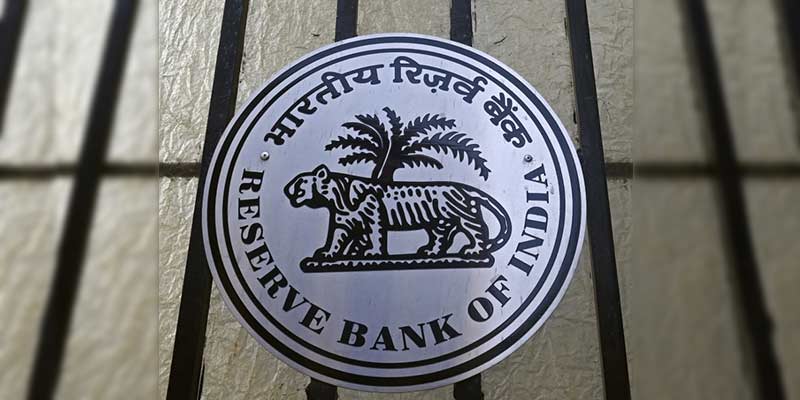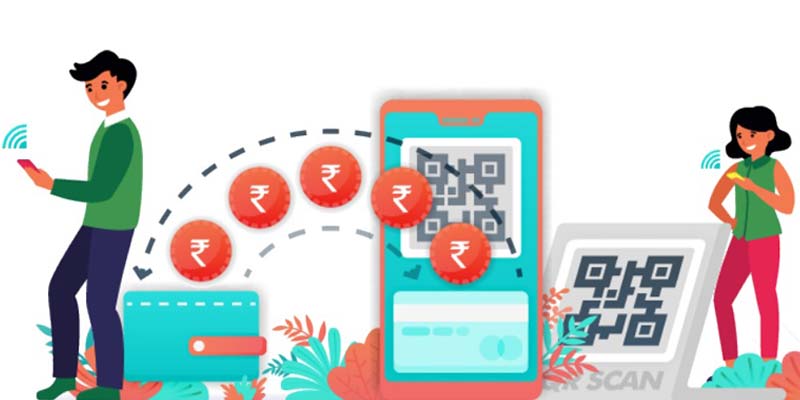- India
- Oct 08
Explainer / What is Central Bank Digital Currency (CBDC)?
The Reserve Bank of India (RBI) said it will soon commence the pilot launch of digital rupee (e₹) for specific use cases with a view to bolstering India's digital economy, making payment systems more efficient, and checking money laundering.
Central Bank Digital Currency (CBDC) is a digital form of currency notes issued by a central bank. While most central banks across the globe are exploring the issuance of CBDC, the key motivations for its issuance are specific to each country’s unique requirements.
Evolution of money
• Management of currency is one of the core central banking functions of the Reserve Bank for which it derives the necessary statutory powers from Section 22 of the RBI Act, 1934. Along with the government of India, the RBI is responsible for the design, production and overall management of the nation’s currency, with the goal of ensuring an adequate supply of clean and genuine notes in the economy.
• In its evolution till date, currency has taken several different forms. It has traversed its path from barter, to valuable metal coins made up of bronze and copper which later evolved to be made up of silver and gold.
• Use of coins was a huge milestone in the history of money because they were one of the first currencies that allowed people to pay by count (number of coins) rather than weight. Somewhere along the way, people improvised by using claims on goods and a bill of exchange.
Money performs three primary functions
• Money either has intrinsic value or represents title to commodities that have intrinsic value or title to other debt instruments. In modern economies, currency is a form of money that is issued exclusively by the sovereign (or a central bank as its representative) and is legal tender.
• Paper currency is such representative money, and it is essentially a debt instrument. It is a liability of the issuing central bank (and sovereign) and an asset of the holding public.
• Irrespective of the form of money, in any economy, money performs three primary functions — medium of exchange, a unit of account and a store of value. Money as a medium of exchange may be used for any transactions wherein goods or services are purchased or sold. Money as a unit of account can be used to value goods or services and express it in monetary terms. Money can also be stored or conserved for future purposes.
Digitalisation of money
• India has made impressive progress towards innovation in digital payments. India has enacted a separate law — Payment and Settlement Systems Act, 2007 — which has enabled an orderly development of the payment system in the country.
• The present state-of-the-art payment systems that are affordable, accessible, convenient, efficient, safe, secure and available 24x7.
• This striking shift in payment preference has been due to the creation of robust round the clock electronic payment systems such as Real Time Gross Settlement (RTGS) and National Electronic Funds Transfer (NEFT) that has facilitated seamless real time or near real time fund transfers.
• In addition, the launch of Immediate Payment Service (IMPS) and Unified Payments Interface (UPI) for instant payment settlement, the introduction of mobile based payment systems such as Bharat Bill Payment System (BBPS), and National Electronic Toll Collection (NETC) to facilitate electronic toll payments have been the defining moments that has transformed the payments ecosystem of the country and attracted international recognition.
• The convenience of these payment systems ensured rapid acceptance as they provided consumers an alternative to the use of cash and paper for making payments.
What is CBDC?
• With the developments in the economy and the evolution of the payments system, the form and functions of money has changed over time, and it will continue to influence the future course of currency.
• The concept of money has experienced evolution from commodity to metallic currency to paper currency to digital currency. The changing features of money are defining new financial landscape of the economy.
• Further, with the advent of cutting-edge technologies, digitalisation of money is the next milestone in the monetary history. Advancement in technology has made it possible for the development of new form of money — Central Bank Digital Currencies (CBDCs).
• RBI has also been exploring the pros and cons of introduction of CBDCs for some time and is currently engaged in working towards a phased implementation strategy, going step by step through various stages of pilots followed by the final launch, and simultaneously examining use cases for the issuance of its own CBDC — digital rupee (e₹) — with minimal or no disruption to the financial system.
• The RBI broadly defines CBDC as the legal tender issued by a central bank in a digital form. It is akin to sovereign paper currency but takes a different form, exchangeable at par with the existing currency and shall be accepted as a medium of payment, legal tender and a safe store of value. CBDCs would appear as liability on a central bank’s balance sheet.
Advantages of CBDC
• CBDC, being a sovereign currency, holds unique advantages of central bank money — trust, safety, liquidity, settlement finality and integrity.
The key motivations for exploring the issuance of CBDC in India among others include:
i) Reduction in operational costs involved in physical cash management.
ii) Fostering financial inclusion.
iii) Bringing resilience, efficiency, and innovation in payments system.
iv) Adding efficiency to the settlement system.
v) Boosting innovation in cross-border payments space.
vi) Providing the public with uses that any private virtual currencies can provide, without the associated risks.
• Cost of cash management in India has continued to be significant. The total expenditure incurred on security printing during April 1, 2021 to March 31, 2022 was Rs 4,984.8 crore as against Rs 4,012.10 crore in the previous year (July 1, 2020 to March 31, 2021)10. This cost does not include the environmental, social and governance (ESG) cost of printing money. It is predominantly borne by four stakeholders — general public, businesses, banks, and the central bank.
• CBDC reduces operational costs including costs related to printing, storage, transportation and replacement of banknotes, and costs associated with delay in reconciliation and settlement.
• The introduction of CBDC, would possibly lead to a more robust, efficient, trusted, regulated and legal tender-based payments option (including cross-border payments).
• The use of offline feature in CBDC would also be beneficial in remote locations and offer availability and resilience benefits when electrical power or mobile network is not available.
• CBDC is aimed to complement, rather than replace, current forms of money and is envisaged to provide an additional payment avenue to users, not to replace the existing payment systems.
Launch of CBDC across the globe
• Across the globe, more than 60 central banks have expressed interest in CBDC with a few implementations already under pilot stage and many others are researching, testing, and/or launching their own CBDC framework.
• As of July 2022, there are 105 countries in the process of exploring CBDC, a number that covers 95 per cent of global Gross Domestic Product (GDP).
• As many as 10 countries have launched a CBDC, the first of which was the Bahamian Sand Dollar in 2020 and the latest was Jamaica’s JAM-DEX.
• Currently, 17 other countries, including major economies like China and South Korea, are in the pilot stage and preparing for possible launches. China was the first large economy to pilot a CBDC in April 2020 and it aims for widespread domestic use of the e-CNY by 2023.
Increasingly, CBDCs are being seen as a promising invention and as the next step in the evolutionary progression of sovereign currency.
How is it different from private cryptocurrencies?
• Private virtual currencies sit at substantial odds to the historical concept of money. They are not commodities or claims on commodities as they have no intrinsic value. The rapid mushrooming of private cryptocurrencies in the last few years has attempted to challenge the fundamental notion of money as we know it.
• Claiming the benefits of decentralisation, cryptocurrencies are being hailed as innovation that would usher in de-centralised finance and disrupt the traditional financial system.
• According to the RBI, the inherent design of cryptocurrencies is more geared to bypass the established and regulated intermediation and control arrangements that play a crucial role of ensuring integrity and stability of the monetary and financial ecosystem.
• As the custodian of monetary policy framework and with the mandate to ensure financial stability in the country, the RBI has been consistent in highlighting various risks related to the cryptocurrencies.
• These digital assets undermine India’s financial and macroeconomic stability because of their negative consequences for the financial sector.
• Further, a wider proliferation of cryptocurrencies has the potential to diminish monetary authorities’ potential to determine and regulate monetary policy and the monetary system of the country which could pose a serious challenge to the stability of the financial system of the country.
• Therefore, CBDCs will provide the public with benefits of virtual currencies while ensuring consumer protection by avoiding the damaging social and economic consequences of private virtual currencies.
Types of CBDC to be issued
• CBDC can be classified into two broad types — general purpose or retail (CBDC-R) and wholesale (CBDC-W).
• Retail CBDC would be potentially available for use by all — private sector, non-financial consumers and businesses. Wholesale CBDC is designed for restricted access to select financial institutions.
• While Wholesale CBDC is intended for the settlement of interbank transfers and related wholesale transactions, Retail CBDC is an electronic version of cash primarily meant for retail transactions.
• It is believed that Retail CBDC can provide access to safe money for payment and settlement as it is a direct liability of the central bank. Wholesale CBDC has the potential to transform the settlement systems for financial transactions and make them more efficient and secure. Going by the potential offered by each of them, there may be merit in introducing both CBDC-W and CBDC-R.
Model for issuance and management of CBDC
• There are two models for issuance and management of CBDCs — Direct model (Single Tier model) and Indirect model (Two-Tier model).
• A Direct model would be the one where the central bank is responsible for managing all aspects of the CBDC system like issuance, account-keeping and transaction verification.
• In an Indirect model, central bank and other intermediaries (banks and any other service providers), each play their respective role.
• In this model, the central bank issues CBDC to consumers indirectly through intermediaries and any claim by consumers is managed by the intermediary as the central bank only handles wholesale payments to intermediaries.
• The Indirect model is akin to the current physical currency management system wherein banks manage activities like distribution of notes to public, account-keeping, adherence of requirement related to knowyour-customer (KYC) and anti-money laundering and countering the terrorism of financing (AML/CFT) checks, transaction verification, etc.
Manorama Yearbook app is now available on Google Play Store and iOS App Store




